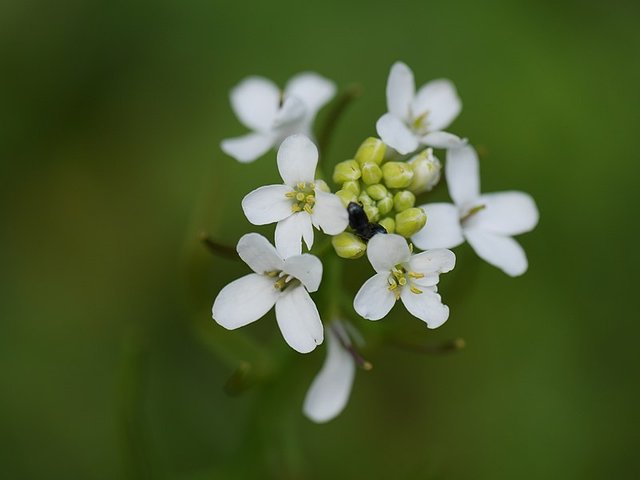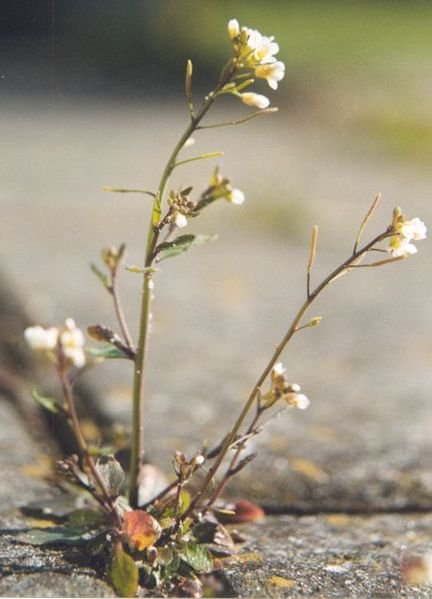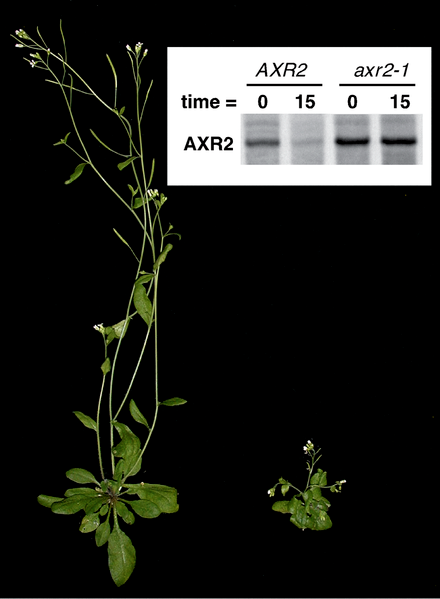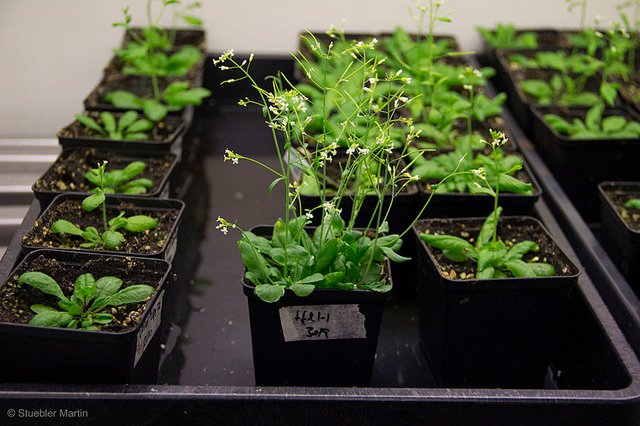Arabidopsis Thaliana - A Model Organism

How fun can a plant be? Very fun, in the case of marihuana. Not so fun in the case of ricin. The excitement might vary for broccoli. But I doubt many of you are super interested in thale cress with the scientific name Arabidopsis thaliana.
So why keep reading if this plant is so boring? Because, obviously, it isn’t. At least not for geneticists! Because just like the mouse and the fruit fly, A. thaliana is an important model organism. But what does that even mean?

Imagine you want to do genetic research. With what do you start? Sequencing a whole genome is easier today than it was 20 years ago, but it’s still a lot of work. And it’s not enough to sequence a Gene, because that only gives you something like below:
That’s …. Not very useful. You can’t even see it’s part of a gene or just some random junk! And now imagine the human genome with 3 fucking billion base pairs. Pairs because to each letter above, there is a corresponding letter. (A - T, G - C). So, if you want to study an organism, to study the genes, you can’t just sequence it all and call it a day. You need to check what everything does. For that, you want model organisms.
Model organisms usually reproduce fast (you wouldn’t use a horse for this reason), are easy to grow in the lab (again, sucks with a horse) are relatively cheap and it’s relatively easy to induce mutations (two-headed horse?).
Enter A. thaliana, a plant with a small genome that has been completely sequenced since 2000, 3 years before the human genome. It’s easy to grow, cheap, small so it doesn’t take up much space and mutations are induced very easily through a bacterium.
Agrobacterium tumefaciens is a bacterium that induces plant tumors in nature by randomly inserting a DNA fragment (T-DNA) into the plant’s genome. This disrupts any gene it hits and causes a mutation.

What does the bored biologist do? They infect A. thaliana with A. tumefaciens, let a new plant grow and see what happens. If something interesting happens, they can check which gene was changed and draw conclusions from it. @suesa
And then we have … the function of a plant gene. Great. What do we do with that? Aside from the obvious, genetically engineering plants (did you know A. thaliana is in the same family as broccoli, cabbage, kale, and rapeseed? How were you supposed to, you didn’t even know this plant 10 minutes ago).
Nature isn’t very segregated. We all (probably) evolved from the same first cell. That means we share genes with all animals and plants. Genes that are kept unchanged throughout evolution are called conserved genes and you’d be surprised how many of those we have.
A. thaliana has genes that are similar to genes connected to diseases in us. 70% of genes that might be linked to cancer in us can be found in a similar form in A. thaliana. The circadian clock has been genetically characterized in A. thaliana.
This small plant is in fact so useful that NASA sent some into space to research its life cycle in microgravity on board the ISS. Results are still pending.
So don’t underestimate plants, they might just save our life one day. Or not. Who knows.

Sources:
Arabidopsis thaliana: A Model Plant for Genome Analysis
Life Cycle of Arabidopsis thaliana in Microgravity (Arabidopsis thaliana)
The Impact of Arabidopsis on Human Health
Generation and characterization of Arabidopsis T-DNA insertion mutants
Today’s Suesa’s favorite is: @geekpowered
He’s a newer user but already giving his best to create good content. Did you know that text messaging turned 25 recently? Do you want to know something fun about dinosaurs? Or rather read about beer in space?
Got a scientific topic which you want to see as a story? Leave me a comment!
You want to support scientists on Steemit? You are a scientist on Steemit? Join the #steemSTEM channel on steemit.chat and connect with us!
STEM is an acronym for Science, Technology, Engineering and Math

You have highlighted the potentials of A. thaliana quite well. I do not know if there are some breakthrough researches in which it's gene has been manipulated to solve real human genetic puzzles. I have read so much about it's potentials long before now. Is it the only organism with such simple genome? Just wondering if the pea plant used by Mendel and the Drosophilia melanogaster fit into the same category. I am too lazy to check on these things but won't mind being enlightened
I did mention the fruit fly, didn't I? :P
Oh. you did. I tend to recognize scientific names easier than English names. Probably @aamin is suffering from same issue
True, I should be more scientific
I want to be able to say the same thing. I tend to recognize plants and animals in the language I learned them, which means sometimes I can recognize things in Italian or Spanish, that I can't in English. In 2018, I want to focus on the scientific names to make it easier.
As a biologist, have you looked into the discipline of biomimicry? I ask because in talking to biologists, they often have fantastic, in-depth research on a given subject, but they don't know what to do with it. Biomimics on the other hand are usually desperately searching for the biology to inspire their designs. There is a growing demand for biologist in biomimetic design.
The focus of my studies is genetics. Not very specialized, as it's just for a Bachelor's degree so we learn a lot of other stuff too, but it all ends with genetics and genetic manipulation.
Biomimicry is a fascinating subject and I don't yet know if I will encounter it in my future professional life, as I currently plan on going more into the biomedical direction. But you never know!
I have met several professionals that use the biomimicry design process in biomed applications--they actually go quite well together. If you have the chance to take any biomimicry classes while you are in a school, take advantage of it. If all goes well, looking to nature and using nature's principles will become the standard way we innovate!
I must ask, is that first hand experience there?
Anyways moving on, wouldn't it still be beneficial to sequence the genome of hundreds (or thousands) of specimens from a species to 1: find the variance/distributions of genes and 2: to create a base template of which genes are present throughout multiple species in order to find out which genes are more specific to each species?
I do not know if what I am asking makes sense, hell we may even be doing exactly that. Anyways, the post was well written as always!
I already have trouble handling caffeine. Go figure 😂
Sure, many organisms are being sequenced but it takes a while and it's easier to have a handful of model organisms to test the basics in.
I recently chatted with a computer scientist and we came to the conclusion that biology is still in the "punch card" phase.
Hey, computer science may no longer be using punchcards but many of the top researchers in the field still compare computer science now to physics in the 15th century because of how many unanswered questions still remain.
you forgot to mention that working on plants means also are less paperwork than justifying why you may want to grow 2 heads on a horse :)
Absolutely! Very important aspect!
From a non-scientist's perspective, it's usefulness cannot be undermined; time saving, cost-effective, fast reproduction, and lots more. I'm surprised I took the time to read this, usually I wouldn't because science jargon bore me but you write your science as though you are telling a story; an interesting style. I'm glad I stopped by. No knowledge is wasted.
I'm happy you enjoyed it! I always try to write it as interesting as possible because there's a reason not everyone studied biology. If I want to tell people about cool stuff, I need to cut the boring parts 😁
Great insight!
A plant that shares the same genes with us. That is very useful for research purposes. Any idea the traits the conserved genes in humans carry?
Check out this one of my sources: https://www.ncbi.nlm.nih.gov/pmc/articles/PMC3124625/ they provide several papers :)
I was about to write a comment about how A. thaliana isn’t the best model for studying human disease but I guess this link proves me wrong. Great work on the post!
Thanks. I'd check it.
There are ofc better organisms :P but never underestimate plants!
Nature is amazing, I never underestimate the activities of it. We need nature, nature don't need us :)
But even not vegetable fans have usually positive words for
broccoli on LSDromamesco.Wow! Nice... The base pairs got my attention... Usually I get confused on which is for DNA or RNA. Maybe you can help me..
I know,
Adenine - Thymine. || Adenine - Thymine
Guanine - Cytosine || Uracil - Cytosine
Can you help me differentiated them?
U-C is wrong. It's either
A-T, G-C for DNA or
A-U, G-C for RNA
OK... Thank you..
I knew something was wrong about it..
So this is basically fruit fly which doesn't run and fly around like a mad man to get away from you :) Nice!
Kind of :D
I am a student of botanical science it's really informative for me